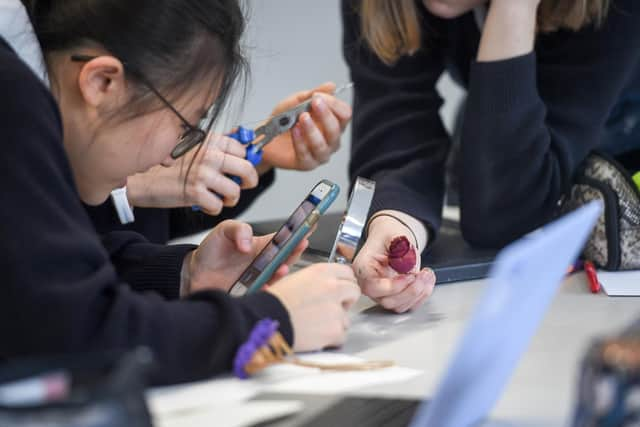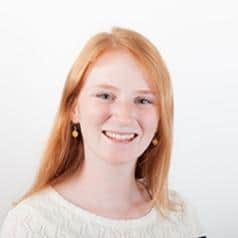'Fake news': How a Scottish project is helping youngsters around the world fight back against dangerous disinformation
Thousands of young Scots are well prepared for April Fool’s Day this year thanks to a new scheme that is helping them identify fake news.
The initiative, known as Project Real, is also generating interest among youngsters from around the world, including those in conflict zones.
Advertisement
Hide AdAdvertisement
Hide AdIt has been led by Glasgow University lecturer Yvonne Skipper, with the help of pupils from three secondary schools in the city.


The free online resource aims to give younger generations the skills they need to spot misinformation and disinformation.
Since its launch, the website has had more than 40,000 hits, including about 4,000 from the Philippines and 1,500 from Ukraine.
The interest from Ukraine comes as Russian-based social media accounts spread fake stories designed to undermine Western support for the war effort against Vladimir Putin’s forces.
Concerns about the impact of fake news have been growing since the UK’s Brexit referendum and Donald Trump’s US election victory in 2016, with studies describing it as an existential threat to democracy because of the way it corrodes trust and faith in public bodies.


Millions of people have been fooled by the trend, with younger generations thought to be particularly vulnerable, as they are often less likely to get their information from traditional media sources.
Dr Skipper’s team, which also involves Nottingham University’s Dr Daniel Jolley and the eQuality Time charity, was supported with £40,000 of funding from Not Equal, which is backed by UK Research and Innovation.
They recruited a group of 18 students from Glasgow’s Whitehill Secondary School, Hillhead High School and Notre Dame High School, who worked for six weeks on the initiative, supported by five social media “influencers”.
Advertisement
Hide AdAdvertisement
Hide AdThe pupils helped pick the topics for six hours worth of content, covering subjects such as fake news, fake people, fake pictures, and conspiracy theories. The sessions are designed for learners aged around 11 to 13.
Dr Skipper, a senior lecturer in the School of Education at the University of Glasgow, said: "I’m really interested in how we can help young people develop the skills they need to spot misinformation and disinformation online.
“We know, obviously, that it is very prevalent – it spreads six times quicker than the truth, we believe it 75 per cent of the time, and a bit like driving, we all think we’re better at it than we are.
"I was quite interested in how we could embed these skills in young people, because there are quite a lot of interventions for adults, but we know young people are online and we know also quite often that is where they are getting their news and information from. They don’t typically sit down and watch BBC news and instead are often scrolling Facebook and TikTok for information.
"I wanted to co-create an intervention, and I wanted to work with young people, because some of the things that do exist are for young people, but they have not actually been created with any input from the young people themselves, so are maybe not as relevant, engaging or exciting to them.”
Dr Skipper said she had been pleased with the response so far, including the interest from abroad.
"We’ve had more than 40,000 hits on our little website. I think it shows there is a huge appetite for this sort of work,” she said.
"They are also global. Our visitors aren’t just UK-based. It’s all freely available online, anybody can use it.”
Advertisement
Hide AdAdvertisement
Hide AdThe materials are already being used in schools, both north and south of the border, often via police liaison officers.
However, with technology advancing all the time, the lecturer said it was important to remain vigilant.
"As we get better at spotting it, they get better at creating it. AI (artificial intelligence) is already changing things, some of the ‘deep fake’ videos are already much better than a year ago. There will always be new techniques for creating this information, so we need to make sure we’re upskilling in how we spot this misinformation.”
Dr Skipper highlighted research showing only about 4 per cent of people can accurately distinguish between real and false information when they see it online.
"It is partly because of the way we think about information when we’re online, we’re not using our deep processing, we tend to use a lot of heuristics – ‘oh, I trust her and she shared it so it must be true’. Or there is that feeling that it is on this website so it is definitely okay,” she said.
"And of course this sort of misinformation, disinformation, it’s rife. It has always been there but now it can spread a lot quicker than before, and it affects not just the things we think but our behaviours.
"We know that misinformation has impacted the outcomes of elections, we know it has impacted people’s healthcare decisions. It’s not just things in our minds, it actually affects the things we do, so it’s really important that we are able to find and identify good sources of information, trustworthy sources, so we can make good and well informed decisions.”
Dr Skipper added: "It’s one of the biggest threats to the world today. It is one of the biggest threats of our time, because if people don’t know what information to trust, they can’t make good choices. And sometimes they get to the stage where they don’t trust anything, and we don’t want that either.”
Comments
Want to join the conversation? Please or to comment on this article.
